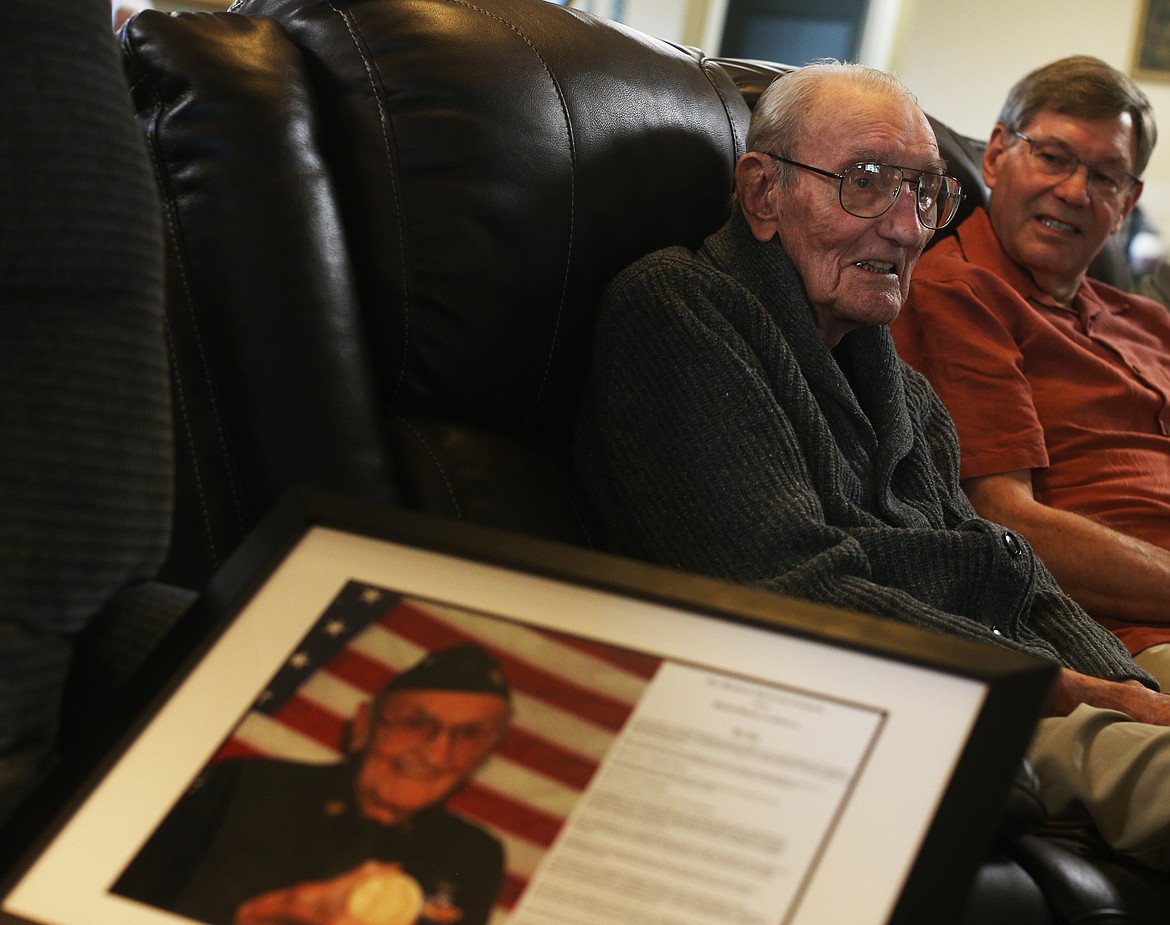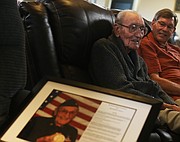Fighter ace still beating the odds
HAYDEN — Outrunning the enemy was the name of the game while dogfighting in the Pacific during World War II, said Hayden resident Ralph H. “Iron Pants” Wandrey.
“Planes that were more maneuverable and faster — those two things are the reasons I’m still alive,” said Wandrey, 96.
He used the Lockheed P-38 Lightning’s speed to his advantage, often to overcome daunting odds.
“It was 10-to-1,” he said of many a dogfight.
Curt Wandrey, pastor at Peace Lutheran Church in Post Falls, said his dad took part in nearly 200 combat missions.
“He never thought he’d live through the war,” Curt said. Wandrey spent 21 months at war, from Christmas Eve 1942 to September 1944.
Wandrey began flying as a college student at the Mason City, Iowa, airport. He took to the skies simply because it was fun, he said. When the war broke out, he already had his pilot’s license and joining the military as a pilot was the obvious thing to do.
Wandrey said winning a dogfight “depended on who was best and more manueverable or could outrun the other.” He tallied six confirmed kills, qualifying him as an ace, plus 12 more probable kills. He flew both the P-38 and the Republic P-47 Thunderbolt with the 9th Fighter Squadron, 5th Air Force.
Wandrey was awarded the Silver Star, Distinguished Flying Cross, and bronze oak leaf cluster in lieu of a second Distinguished Flying Cross for his heroics in the Pacific. His efforts were part of the American campaign to hold onto a foothold in the Pacific at Guadalcanal, and to defend Australia from Japanese invasion.
Being shot at wasn’t the easiest way to make a living, Wandrey said.
“Now and then someone would get on your tail. To feel the bullets going through your plane was not comfortable,” he said with a laugh. Wandrey was never shot down, but many of his colleagues were.
One who survived combat but not the war was Maj. Richard Bong, known as the “Ace of Aces” of American fighter pilots. Bong recruited his former wingman Wandrey to test planes for Lockheed near Los Angeles. However, Ralph’s better half gave him an ultimatum: Get a divorce, or turn down the test pilot offer. Wandrey kept his nuptials, and Bong died on a test flight in August 1945.
Though he did not become a test pilot, Wandrey did have to run some risks after the war. He contracted tuberculosis of the kidney and was given six months to live.
“I stretched it out a little bit,” he joked decades later. His recovery came in part to becoming a guinea pig for the Department of Veterans Affairs. He was in and out of a VA hospital for five years and took 44 pills a day.
“He beat those odds too,” said his son.
Wandrey said he had a lot of respect for the Japanese pilots he flew against. After the war he was able to reunite a captured Japanese battle flag with the surviving relatives of the Imperial soldier to whom it had belonged.
Wandrey also penned his wartime memoirs in a book, “Fighter Pilot.” There are still a few rare, highly priced copies available from Amazon and other sellers.
Wandrey received a Congressional Gold Medal in 2015. Today he resides at Maple Wood Assisted Living Facility, less than a mile from a local airport — much like the one where he first took to flight.



